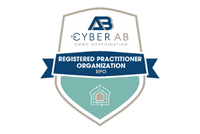
Your company’s most precious business resource is its data. What is your game plan for protecting it?
Data loss cripples businesses – studies show that over 50% of businesses hit by cyber-crime close their doors within 6 months. What measures are you taking while cyber-criminals step up their game? If your game plan doesn’t include backups, you’re effectively planning to lose when (not if) a cybersecurity breach occurs. Don’t like losing? Let’s go over some game plan essentials to get that win.
Consider the elements
Even with strict information controls and excellent maintenance of technology, avoiding data loss incidents is all but impossible. You can account for what you can control – and that’s about it. Aside from the usual suspects – ransomware, human error, and technology failure – there are other forces that could destroy your business if you don’t have proper backups. Don’t let other variables, such as natural disasters, structural fires, and theft, derail your business success. Create a Disaster Recovery Plan to use as your playbook for succeeding in less-than-ideal conditions, and position yourself to recover that data quickly.
A strong lineup
Not all backups are the same. Businesses have different needs and budgets and every backup strategy needs to consider both. Think of this as your line up. How long can your business afford to be “down” in the event of a disaster? What players need to stay in as long as possible? What data is affordable to lose? Priority should be given to the data essential to carry out your essential business functions. In the event of a breach, recovering that data quickly could spare you big losses.
Use a long term strategy
A winning game plan takes you all the way, right? Backups protect your data by ensuring you have a ‘copy’ of everything you need in case of compromise. How long should you keep those copies? The compliance and regulatory requirements for your industry should guide how long you keep data backups. A good long-term strategy accounts for not just unexpected events, but also compliance requirements to ensure your data is there whenever you need it.
Plan for the wildcard
People are a constant variable in the biggest upsets. In times of emotional distress, employees often make poor decisions. Almost 75% of departing employees admit to taking company data in some form. 70% of intellectual property theft occurs within 90 days of an employee’s resignation. Worse yet, even more malicious activity can occur and hostile actors inside the workplace, unfortunately, purposefully delete data. Plan for the wildcards by having timely backups and enjoying peace of mind knowing you can get back to normal after a compromise.
The competitive advantage
If a disaster were to hit your area, how quickly would your business recover? How quickly would your competitors recover? Implementing a disaster recovery plan through effective backups ensures quick restoration and minimizes down time. Make backups your competitive advantage by ensuring you can get back on your feet faster and more effectively than your competitors.
A strong game plan accounts for all known and unexpected factors. It includes an aggressive offense for the things we can predict, and a solid defense for the sudden and unexpected. Plan for the win – backup your data and get back to business.
Want to secure a win for your business?
Our team will work with you to create a custom disaster recovery plan that fits your business needs, the data you need to protect, and your budget. Contact us today!




